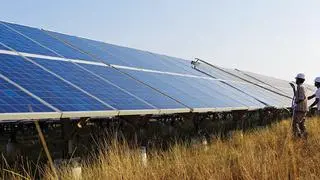Clean Science has had a forgettable FY24, much like the broader speciality chemicals sector, and has entered a new financial year with an improved outlook. While the company is poised to deliver volume-led growth, investors should wait to enter the stock at valuations that factors all the risks.
The company currently trades at 47 times FY25 consensus estimates, which are at an estimated growth of 35 per cent YoY. Investors should look to accumulate the stock at a PE to growth ratio of 1-1.2 times (considering the uncertain macro environment), which should imply a valuation of 35-42 times.
The stock has corrected 42 per cent since our last ‘book profit’ call on February 5, 2022, at which point the stock was trading at a lofty 82 times FY23 earnings. After reporting 35 per cent revenue CAGR during FY21-23, revenue growth declined to negative 15 per cent in FY24. Volumes were aided marginally by new product introductions in FY24 but price decline of 16 per cent impacted growth.
Capacity for growth
Starting mid-FY24, Clean Science has commercialised a new stream of revenues from HALS (Hindered amine light stabilizers). Though the commoditised product faced lower-than-expected price realisations, the large size of the project, first supplier from India status (replacing China and Europe for domestic and international demand) and long runway for growth, add to Clean Science’s growth levers. Two products from the planned portfolio of 10 HALS have started commercial deliveries, mainly in domestic markets.
For FY25, the company aims for gradual introduction of the rest and parallelly building commercial lines in export markets. The already built-up capacity has only marginally contributed to FY24 revenues, and the company should expect 10-15 per cent incremental revenues in FY25 and FY26 from this project at the least. The initial supply relationship built with the two HALS products should expedite future products as well, as the client group will be largely similar, which includes water treatment plants and plastics industries.
Clean Science expects to commit another ₹230-crore capex on pharma and agro intermediaries plant. The initial ₹30 crore capex is expected to be commercialised by Q3FY25 for a pharma intermediate. The remaining portfolio is undergoing pilot trials, and a firm plan should be expected by Q1FY25. At an estimated two times asset turnover ratio, the project can add 20-30 per cent to revenue block in the next two-three years. Clean Science is using the excess real estate at HALS location to execute the project and the company has largely relied on internal accruals for expansion, which partly de-risks the projects.

Muddled macros
Supply uncertainty and post-Covid jump in demand spurred accelerated sales in FY23, which drove volume and prices in the year. A resultant de-stocking and lower prices, following commodity cool-off, doubly impacted in FY24. Additionally, China and other chemical competition including in India, built in anticipation of demand, has exacerbated the price decline. From an eroded base in FY24, while volume and price recovery can be expected, the extent cannot be estimated, given the uncertainty of global recovery. Even in Q4FY24, the company has reported a 5 per cent sales growth. This was led by volume growth and price growth may still have been negative or underwhelming.
The chemicals sector’s growth, including for Clean Science, will be dependent on Chinese economic recovery, without which the excess capacity from China will continue to pressure prices in commoditised chemicals. The European and US market recovery is also on uncertain terms and will further impact competition with China.

Financials and valuation
Clean Science has commercialised a large HALS facility in a quick turnaround, along with adjacent capacities, that can offer the company a long runway for volume-led growth. But with operations in commoditised/semi-commoditised markets, pricing power remains volatile for Clean Science.
The consensus estimates indicate a 35 per cent revenue and EPS CAGR for next two years. Two-thirds of this growth should be derived from HALS ramp-up and operationalising agro-pharma intermediate complex in the next two years. The remaining one-third can be ascribed to base business recovery in volumes (which is under way), and pricing, which can be volatile.
Global demand recovery translating to Chinese domestic recovery should decompress prices and push volumes for Clean Science. Given the uncertainty, investors should seek comfort in valuations, which are currently at a high at 47/35 times FY25/FY26 estimates, before accumulating the stock, despite capacity-driven growth.






